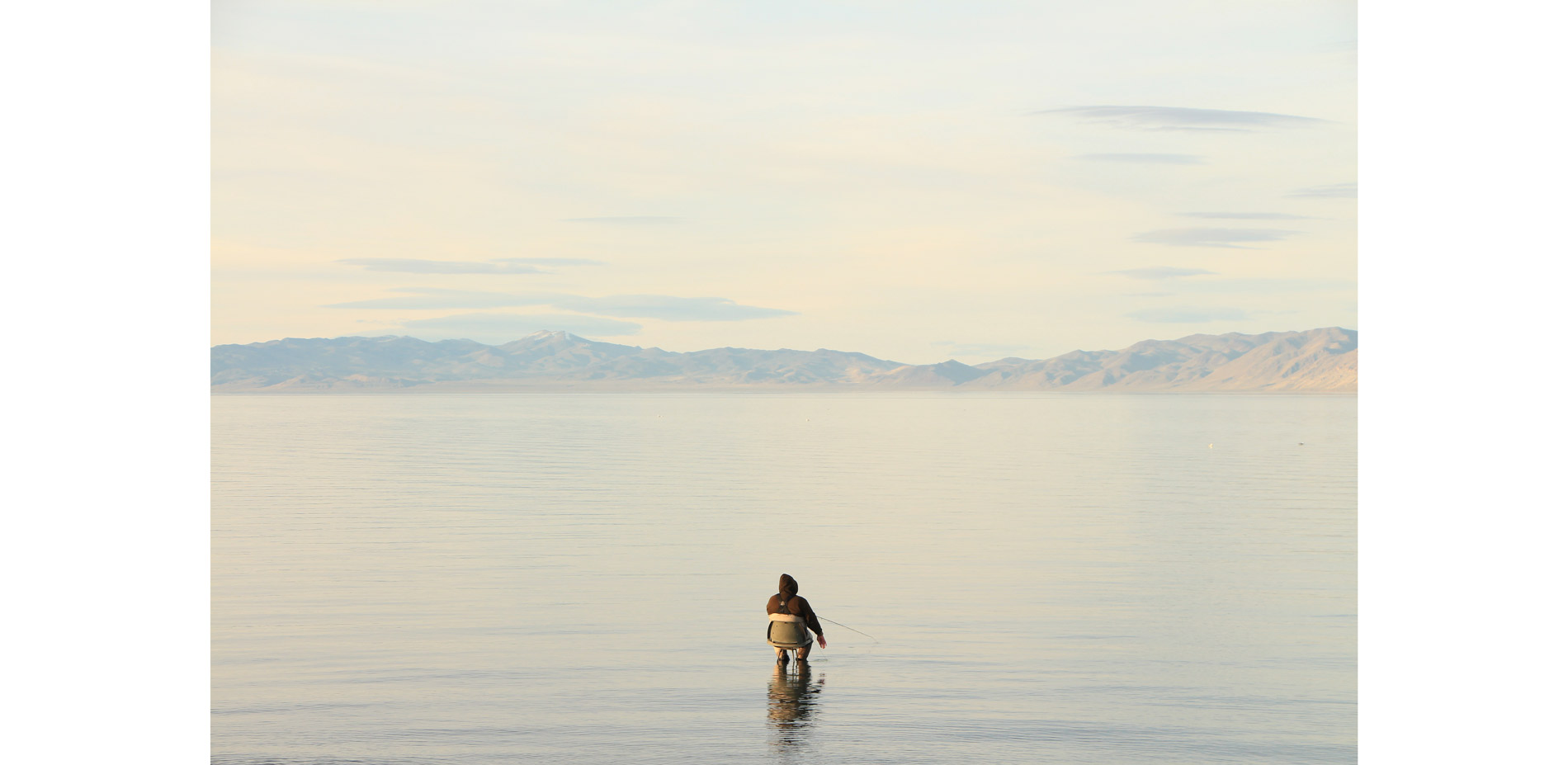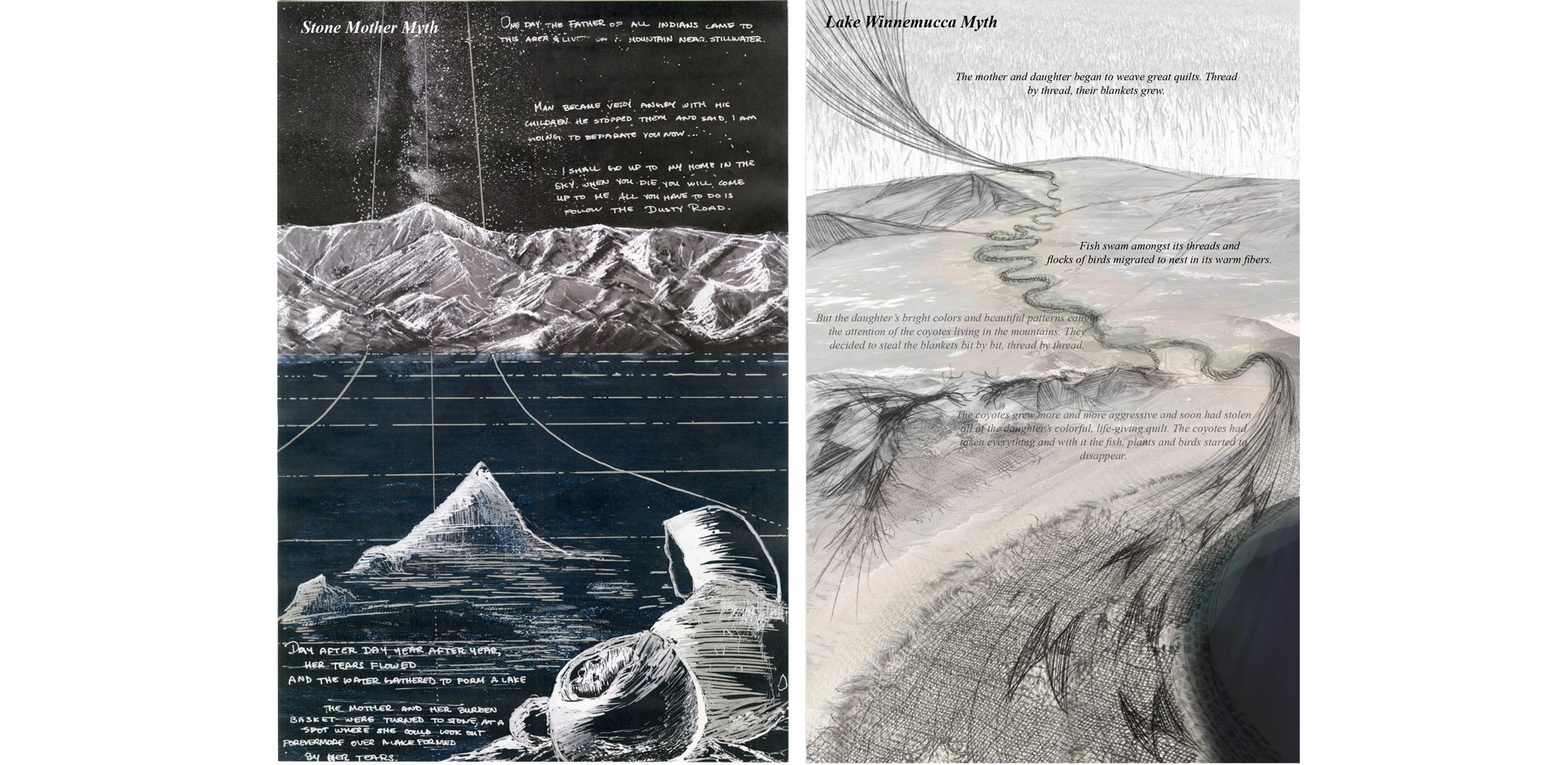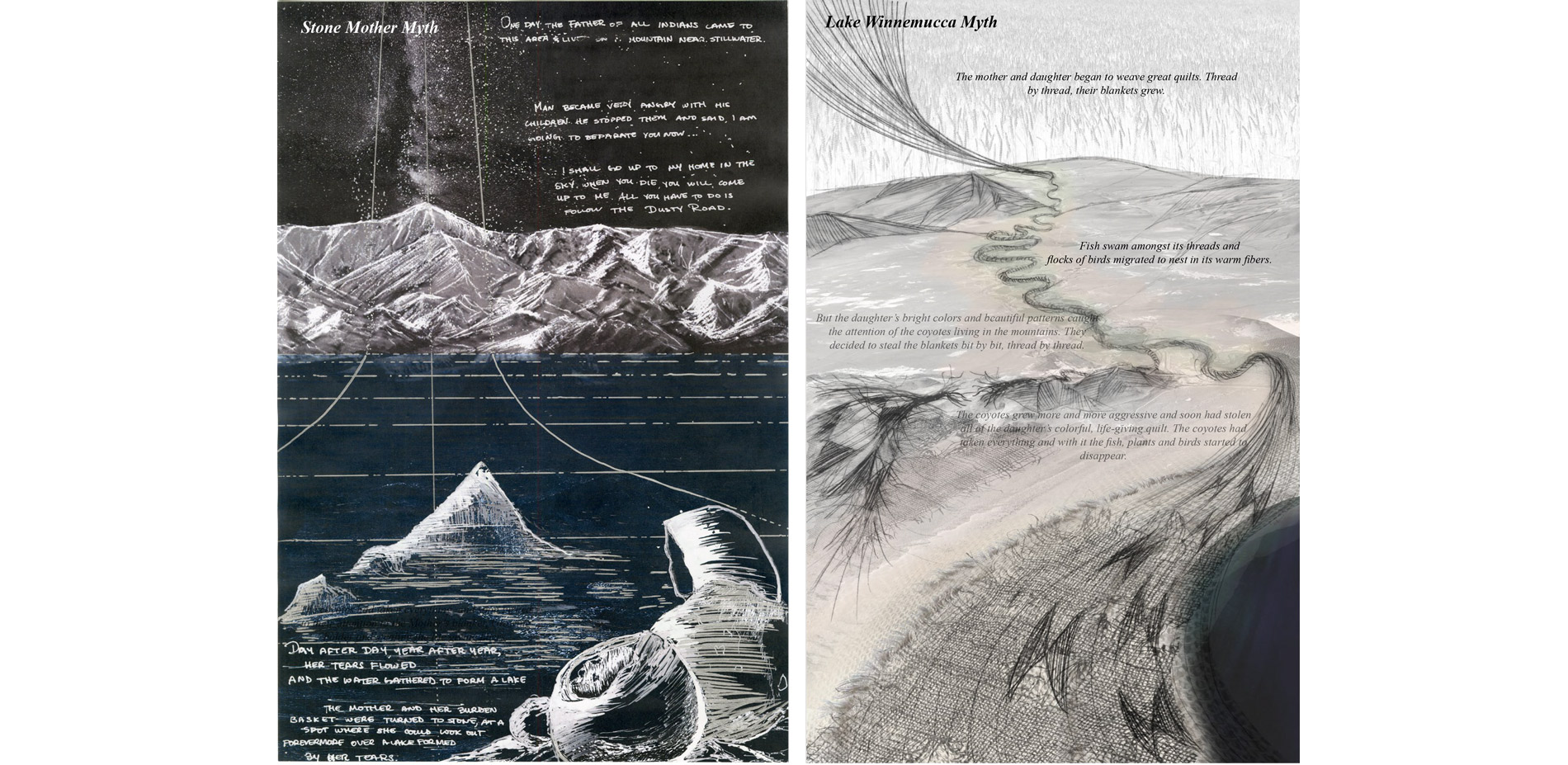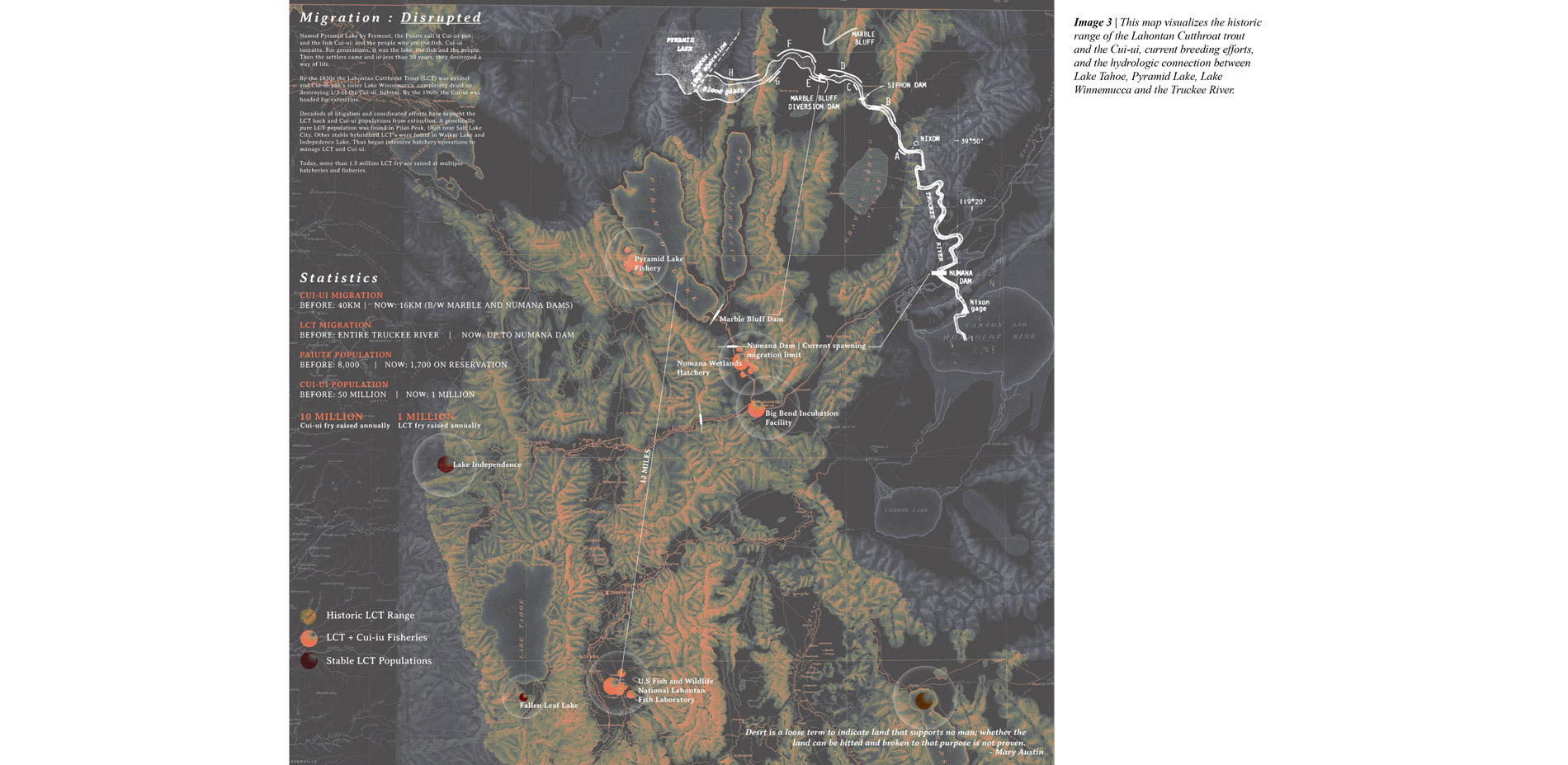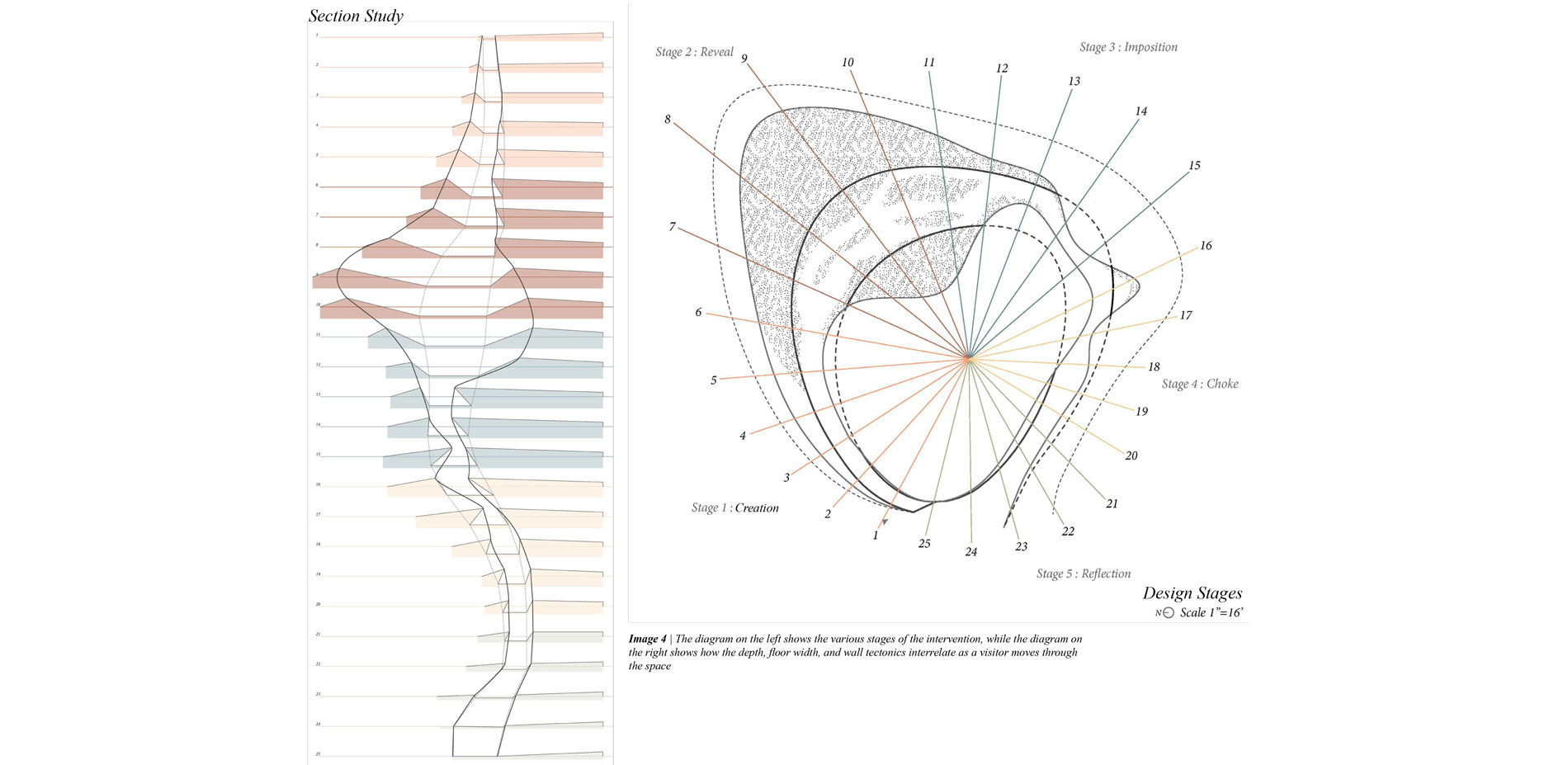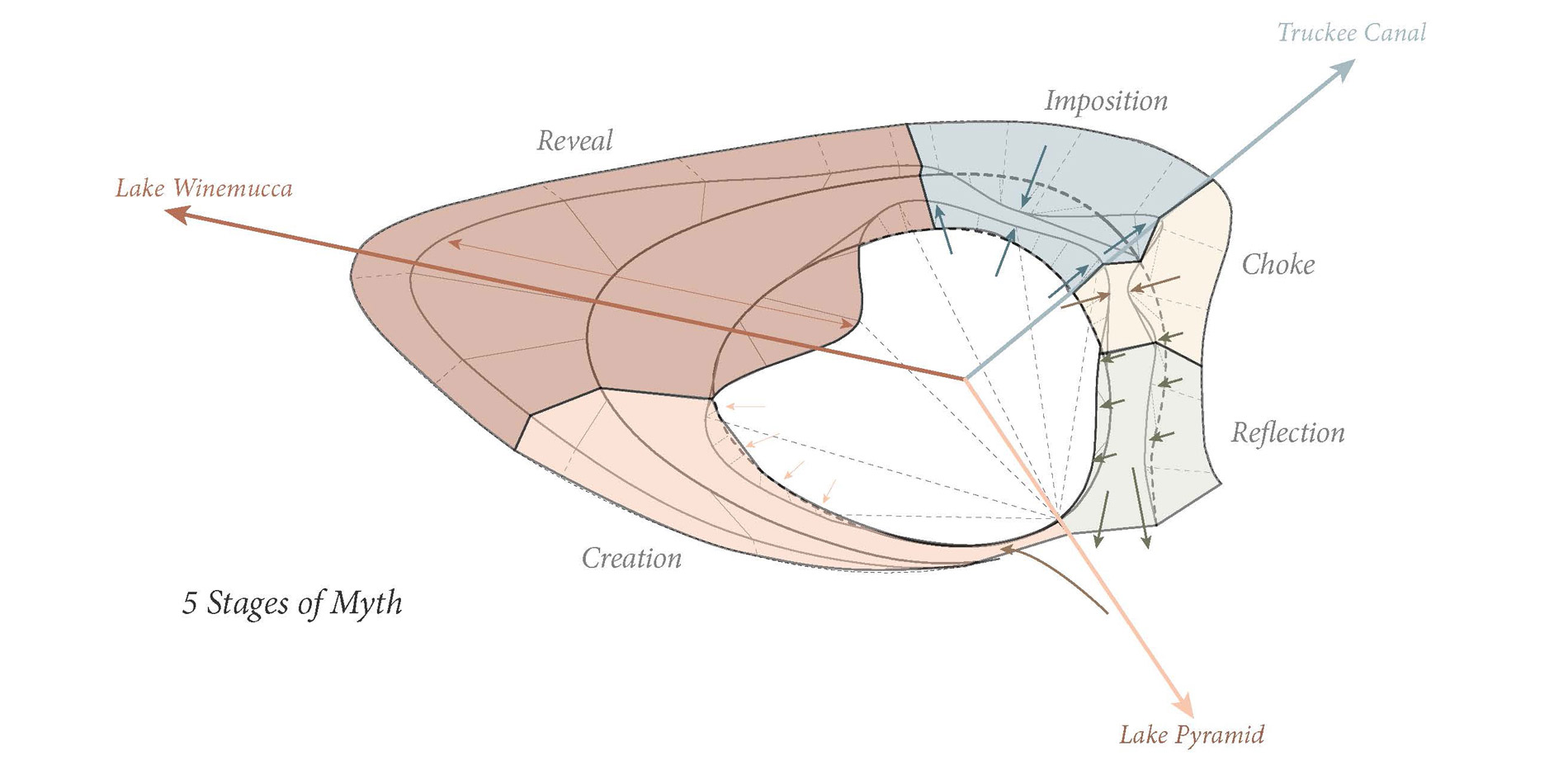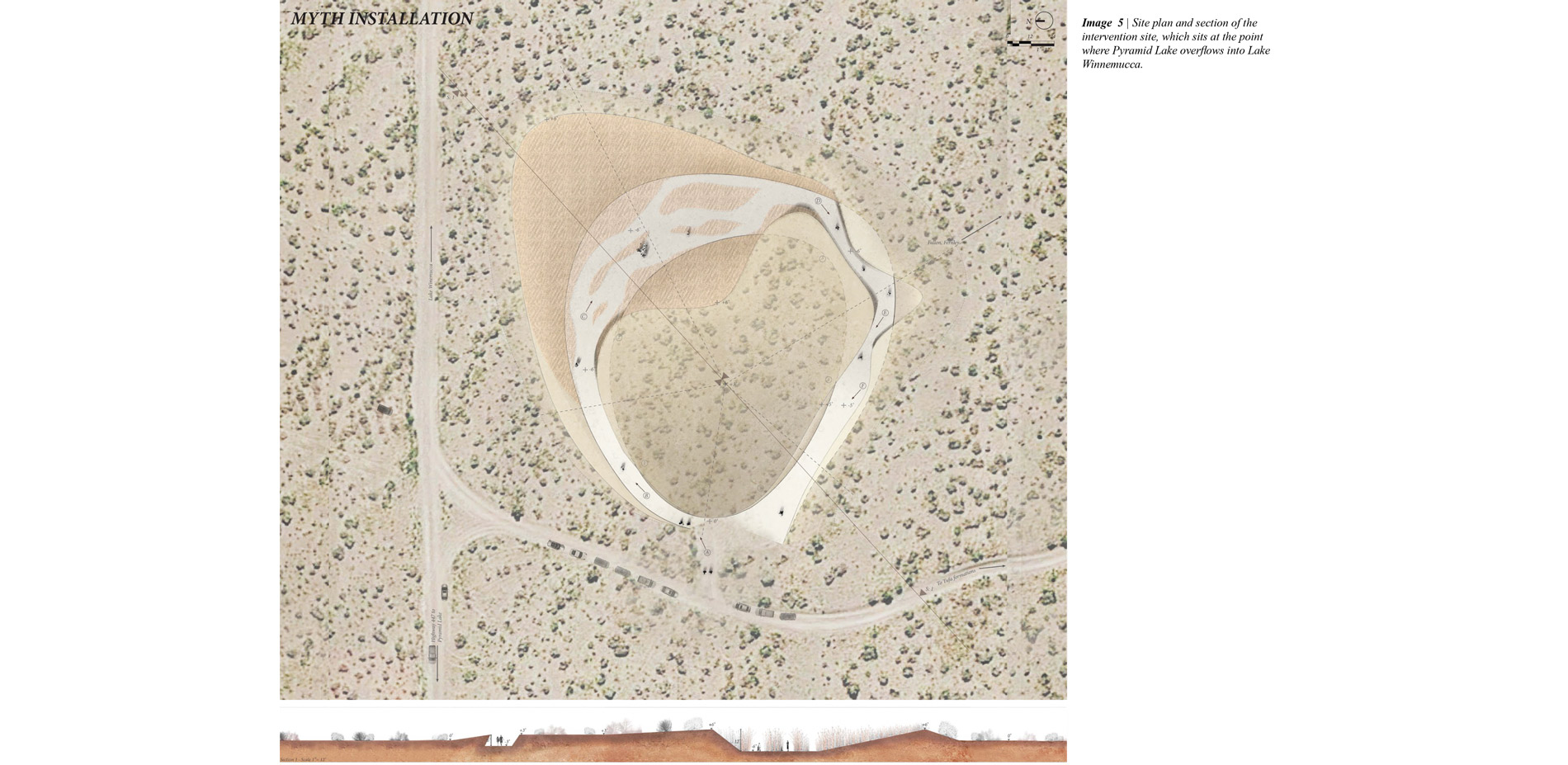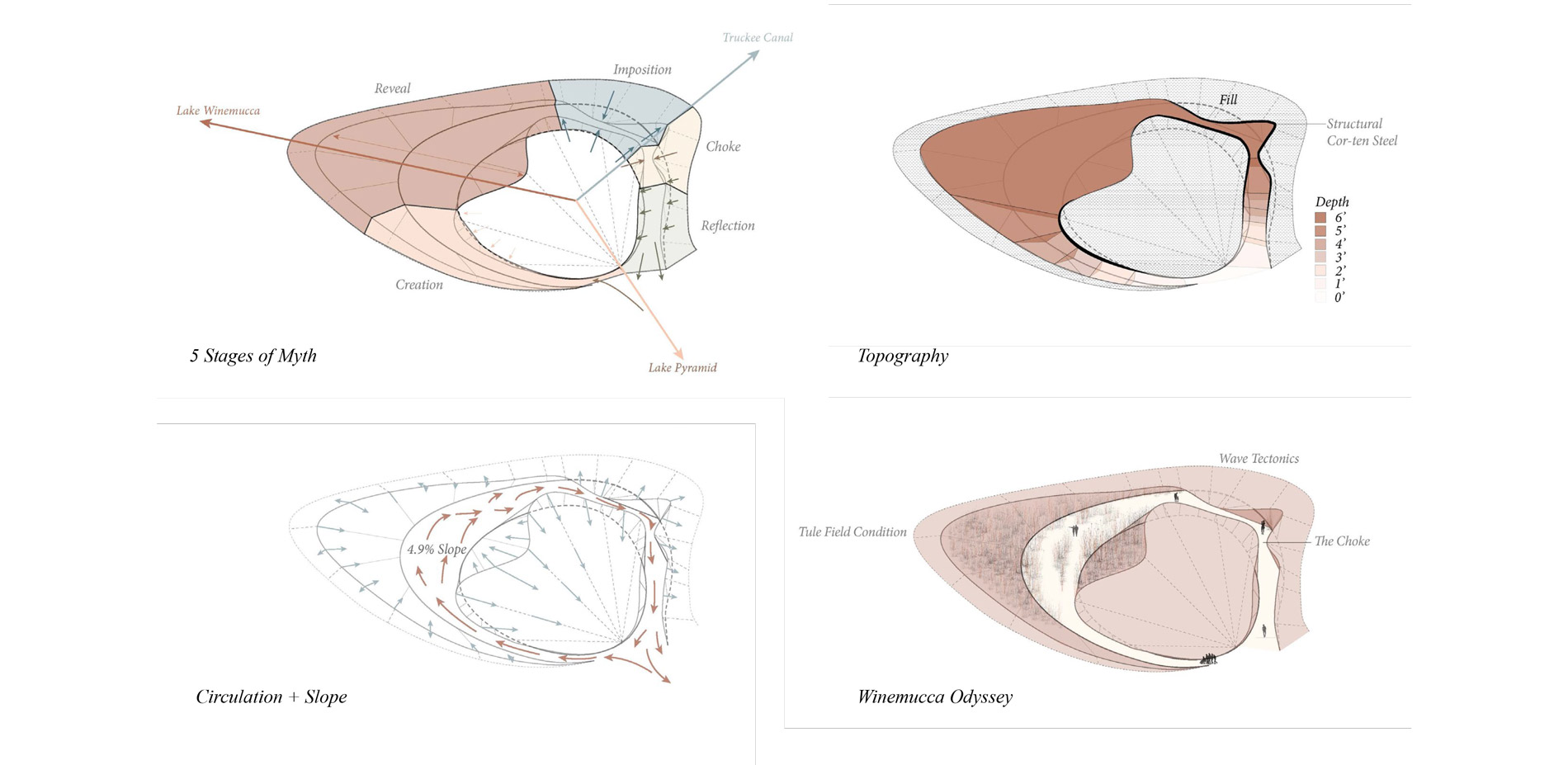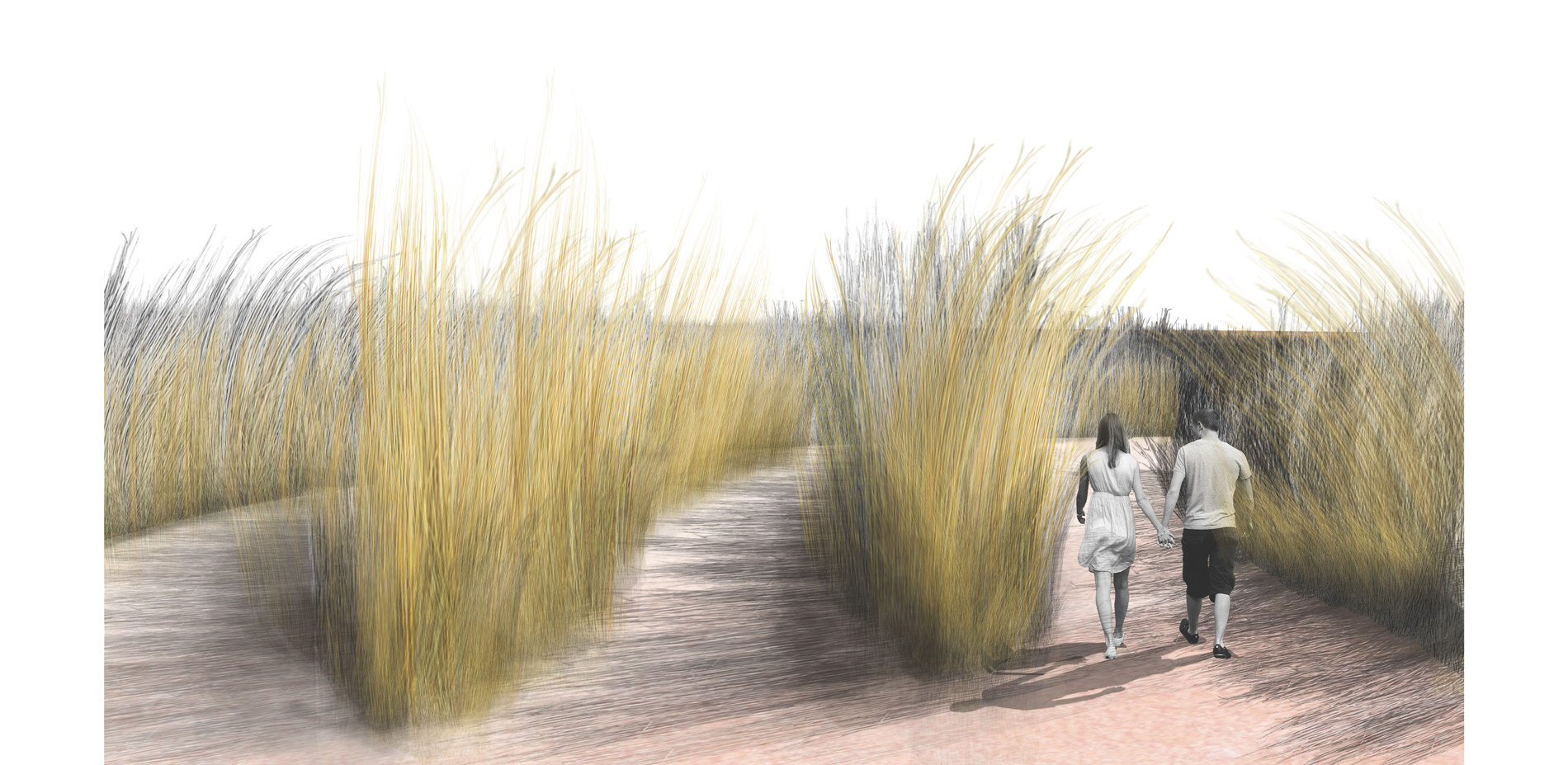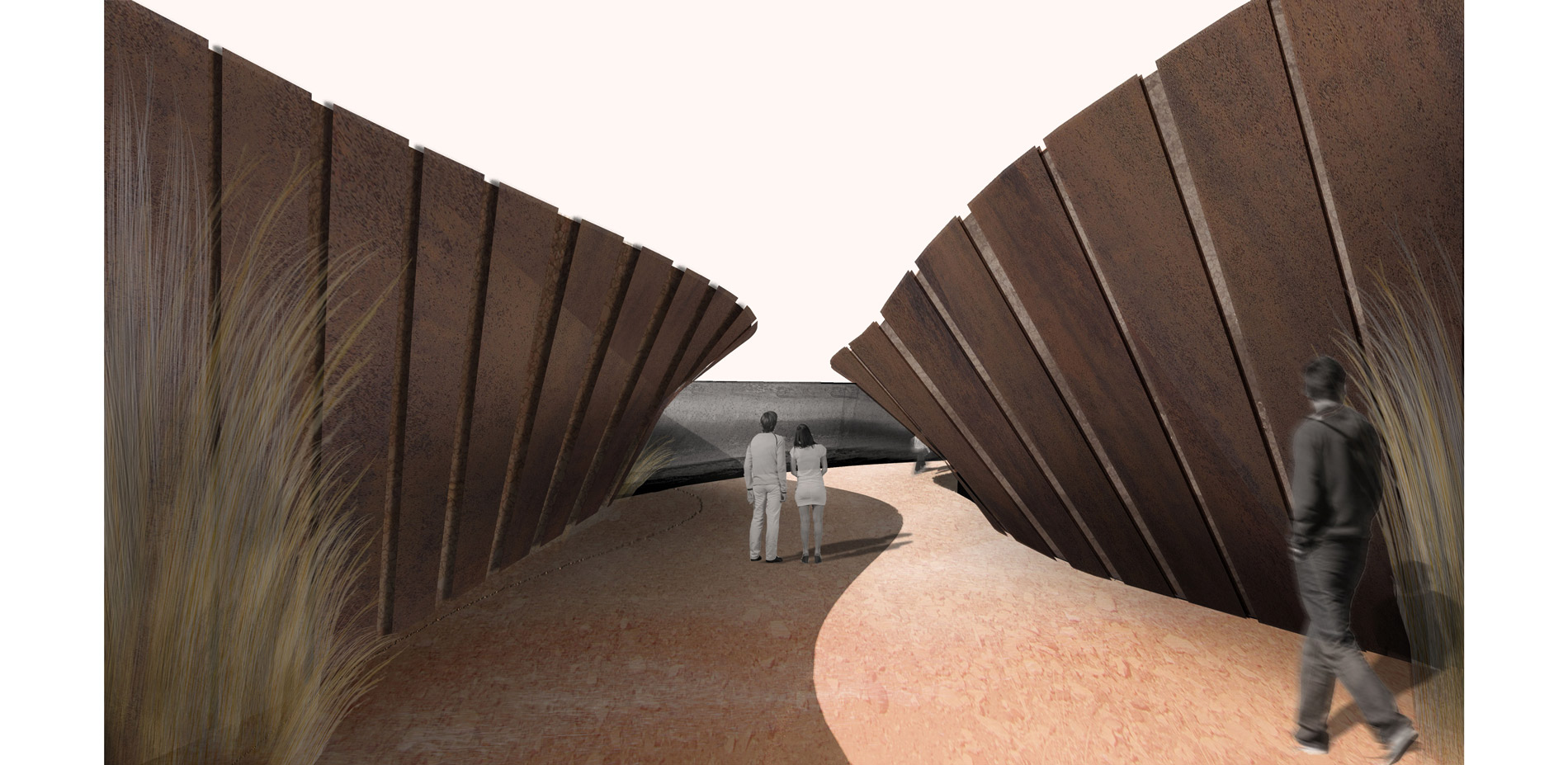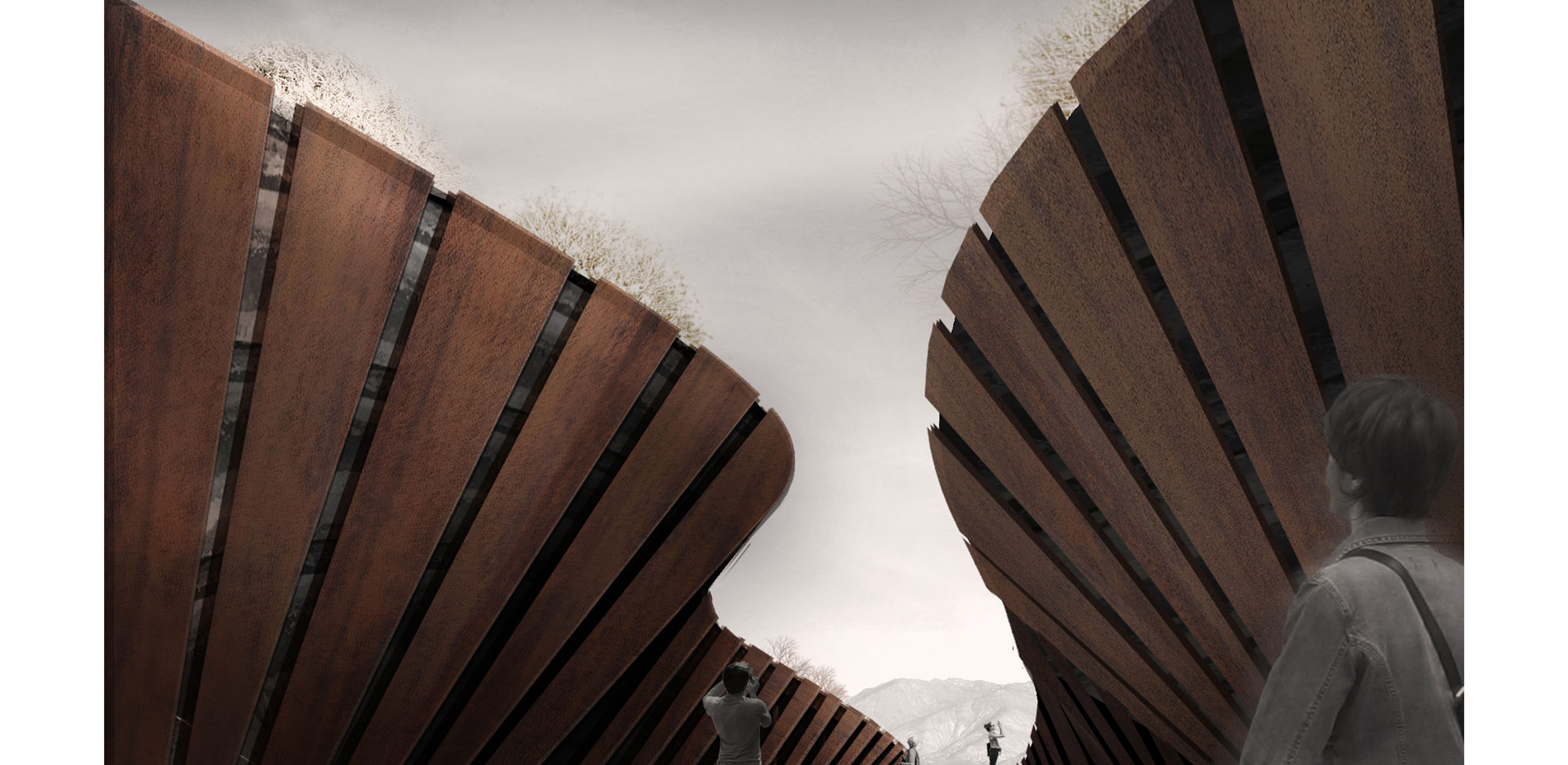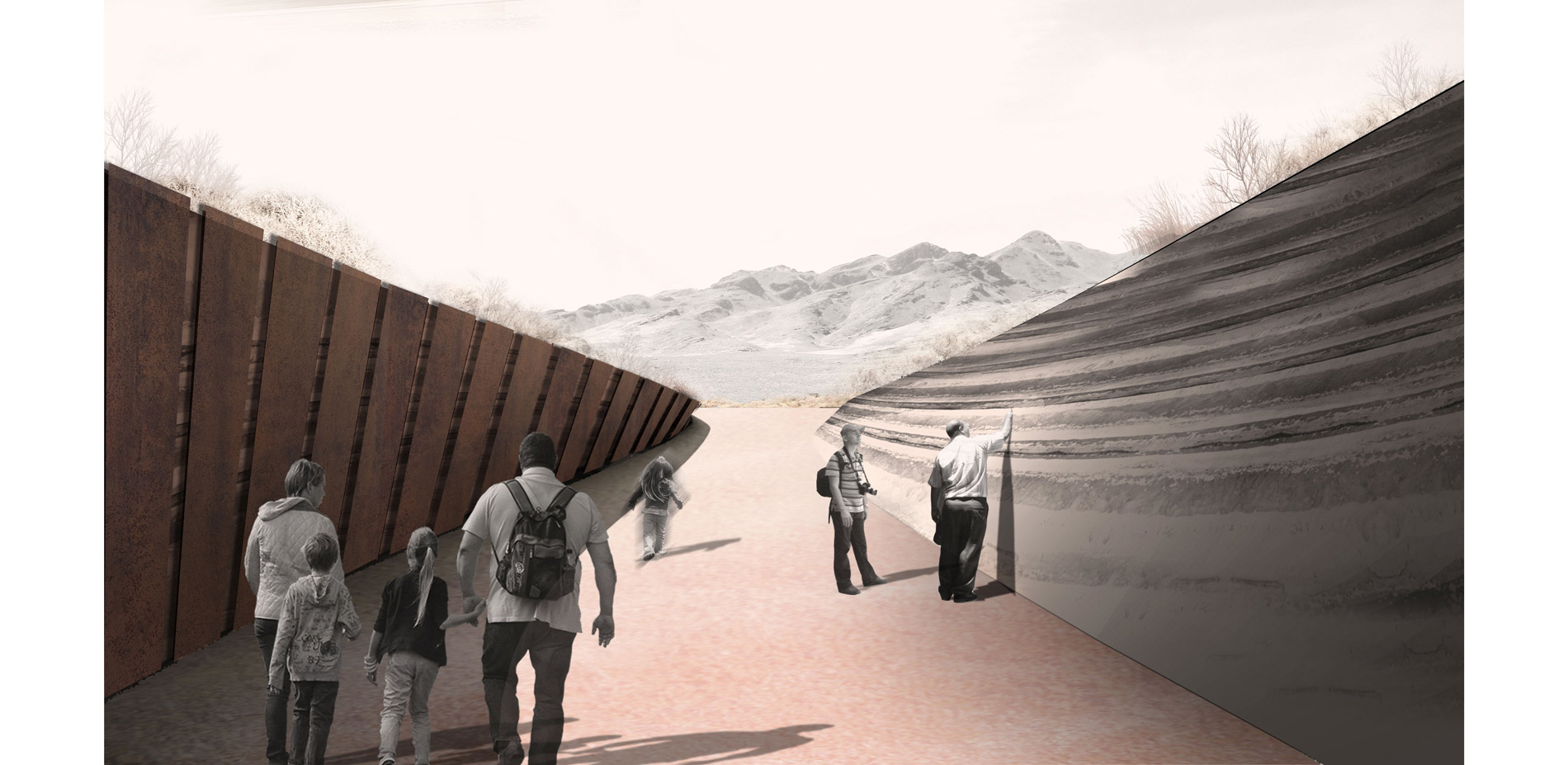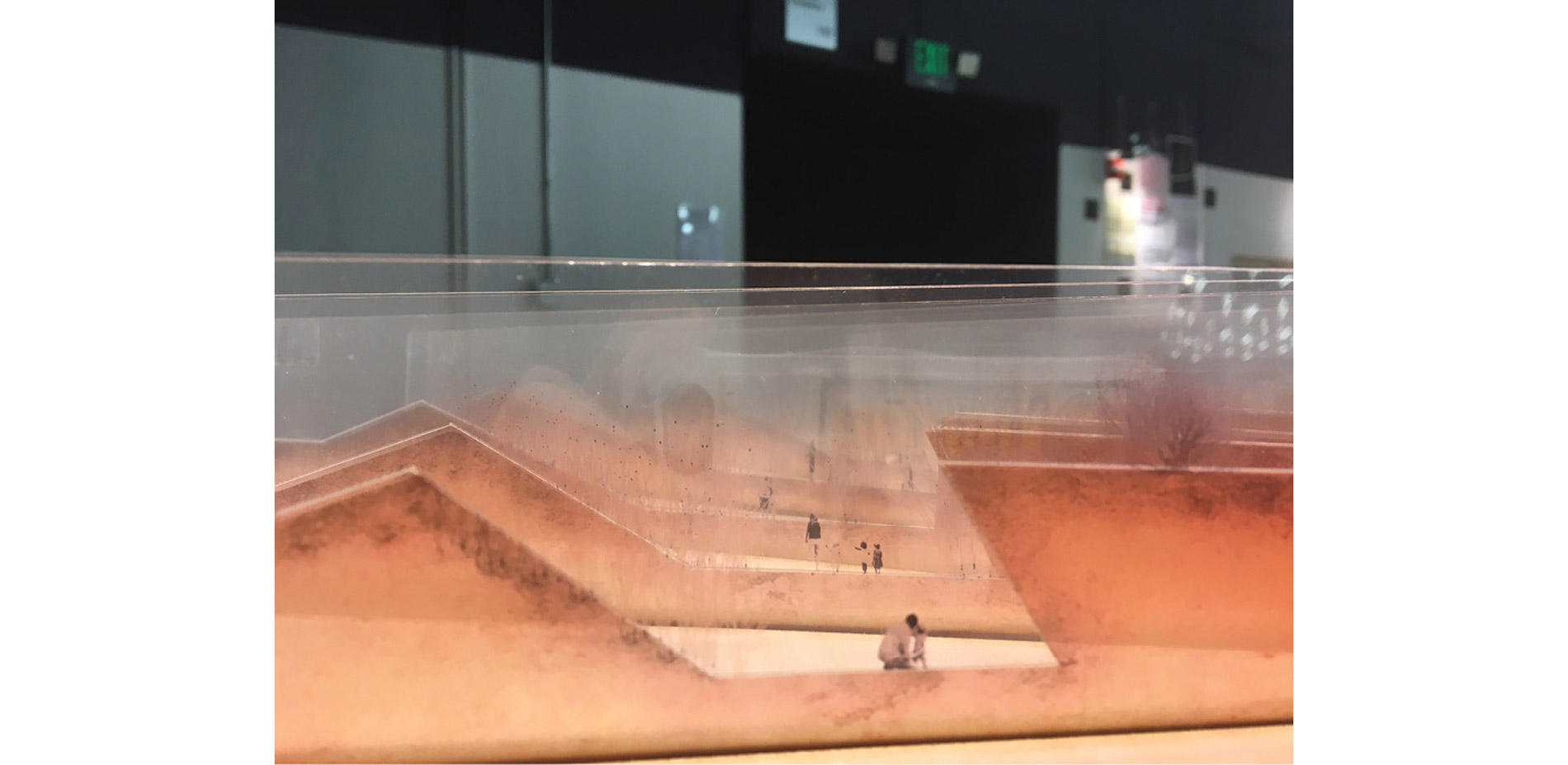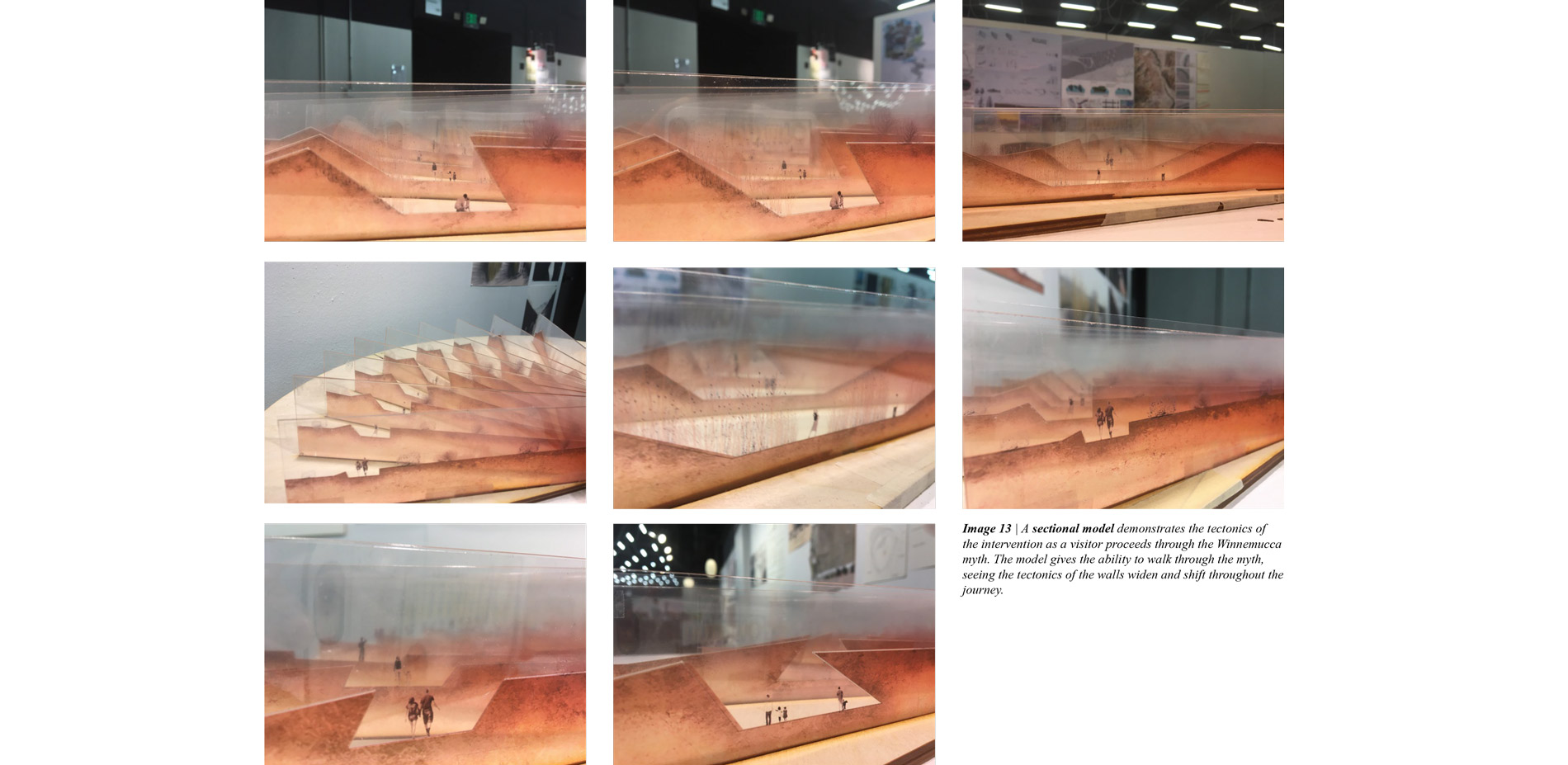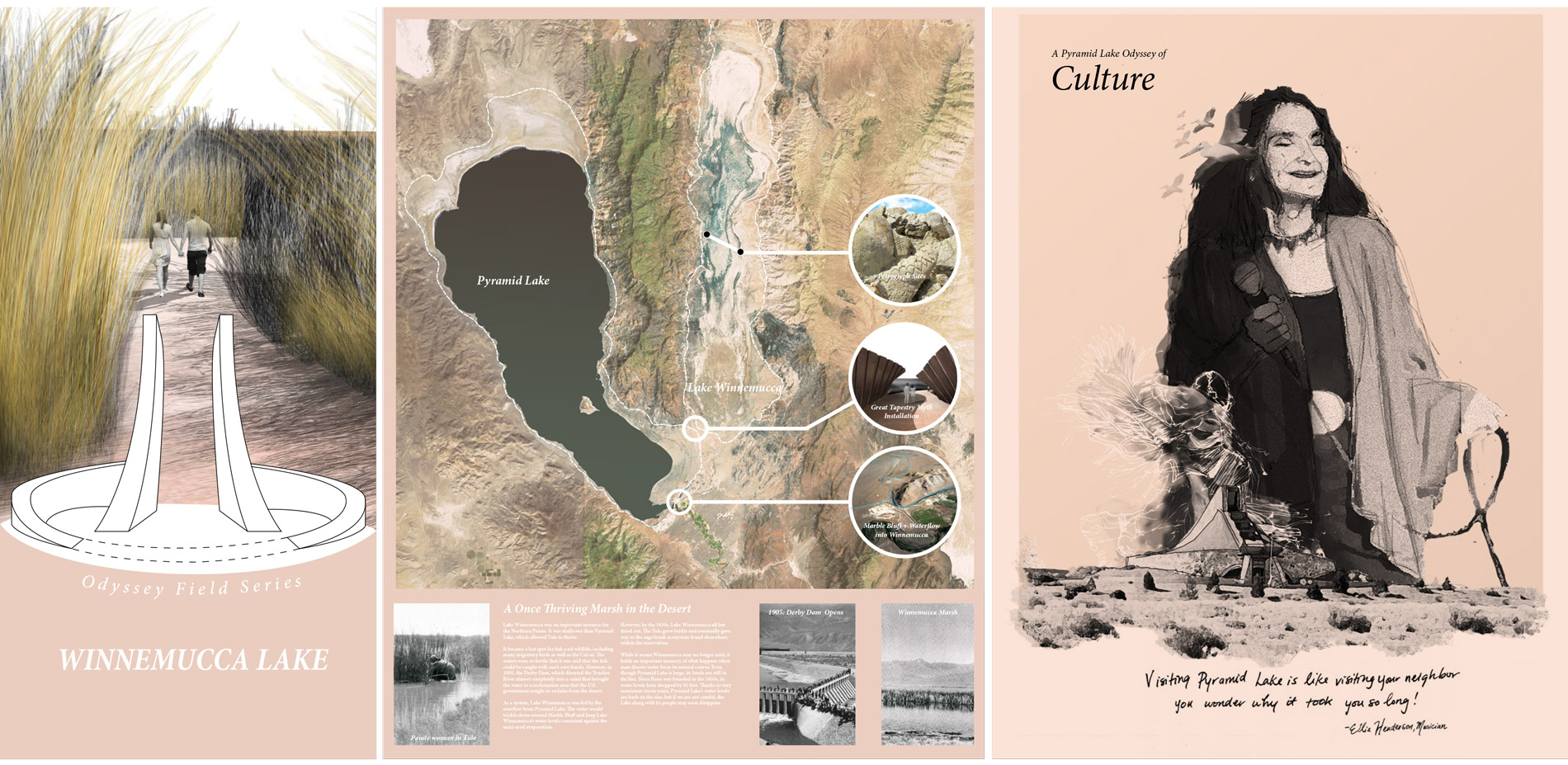Myth, Memory, and Landscape in the Pyramid Lake Paiute Reservation
HONOR AWARD
General Design
Pyramid Lake, NV, USA | Team: Derek Lazo, Student ASLA; Serena Lousich, Student ASLA | Faculty Advisors: Danika Cooper, ASLA
UC Berkeley
There is a certain beauty about the sand moving around it, and that the site is always changing. The best landscapes embrace change. The project becomes a kind of vessel to show the changes.
- 2018 Awards Jury
PROJECT STATEMENT
Myth, Memory and Landscape in the Pyramid Lake Paiute Reservation uses Landscape Architecture as an instrument, demonstrating the power of design to transform communities and perspectives in a meaningful way. The Landscape Installation uncovering the story of the untold story of Lake Winemucca is located at the once confluence between Pyramid Lake and Lake Winemucca. This project uncovers new methods for engaging with indigenous culture and hardships when one may not be from that community or shared in an experience. This design proposal provides a means to push the boundaries we have as designers, existing somewhere between the insiders, the Paiute, and the outsider, Reno and non-tribal visitors. From our design perspective, the land's incredible power and scale was not a place for agriculture or production, instead it held a mysticism and calm reverence, and this aspect drove the design program. Our program uses landform to manifest a new myth that engages the outsiders, encouraging them to journey into the landscape and discover the Paiute's rich history and immense struggle to this day.
PROJECT NARRATIVE
CONTEXT
Myth, Memory, and Landscape in the Pyramid Lake Paiute Reservation was part of landscape architecture studio taught by Prof. Danika Cooper, which challenged cultural myths of the desert as infertile, barren, and unproductive. Our project explored the relationship between indigenous histories and cultures, the "outsiders" in the surrounding communities of Reno, Sparks, and Fallon, Nevada, and the desert ecology. Our goal was to create a didactic landscape installation that would teach the "outsider" about the Paiute community, their history, and the surrounding desert ecology.
The Pyramid Lake Paiute reservation is 475,000 acres, located 50 miles outside of Reno, Nevada. At the center of the reservation is Pyramid Lake, a massive inland waterbody that occupies nearly a quarter of the reservation. The lake is the terminal point on the Truckee River, which begins 121 miles away at the outflow of Lake Tahoe. The Lahontan Cutthroat Trout and Cui-ui are native to the Truckee River and have been both a critical source of food as well as a cultural icon for the Paiute for generations—so much so that the tribe self-identifies as the Numu or Cui-ui eaters. Pyramid Lake is adjacent to its perennial sister lake, Lake Winnemucca, whose shallow waters once provided prime habitat for migratory birds and Tule reeds.
When the Truckee River was channelized in 1905, the diverted water became the primary municipal supply for Reno and Sparks as well as irrigation water for the agricultural fields in the Carson District, located southwest of the Paiute reservation. Even though Pyramid Lake sits within the boundaries of the reservation, water diversions were made upstream of reservation land. The impact was catastrophic—almost overnight, the water level dropped 60 feet; today, water is more than 100 feet below pre-canal levels. As a result, Lake Winnemucca permanently dried and turned into an alkaline scrubland. A few decades later, the Cui-ui trout became locally extinct, leaving the Paiute economically and socially vulnerable. Lake Winnemucca's desiccation is a symbol for the imbalance of power in the region over water.
APPROACH
Our goal for Myth, Memory, and Landscape was to use landscape architecture to bridge the symbolic gap between the Pyramid Lake Paiute tribe members ("insiders") and the surrounding communities ("outsiders"). We designed an experiential journey into the Paiute landscape that would teach the outsiders of the catastrophic imbalance in the region and of the consequences in the fight for water.
Through our design process, we attempted to answer the following question:
how can we as designers intervene sensitively in a land that is not ours and whose culture is peripherally understood?
We researched the history of the Paiute culture both through secondary sources and ethnographic methods. We visited the site twice and conducted a series of in-person interviews. We learned that storytelling is the primary mode of teaching in traditional Paiute culture. These myths are passed from generation to generation to teach members of the tribe's foundational values. The "Stone Mother" myth recounts the story of a mourning mother whose tears formed Pyramid Lake and taught the Paiute members to foster cooperation, rather than violence. In conversation with Billie Jean Guerrero, the tribe's historian, we learned that the Paiute tribe needed new myths to teach future generations about the tribe's modern history. As a result, we developed a narrative around the drying of Lake Winnemucca and translated it into a didactic landscape.
Paiute symbolism played a role in our design decisions. We adopted the number "five" and the circle because of their symbolic significance to the tribe and these prominent symbols provided a framework for the landscape experience as cyclical and as progressing through five stages. The Paiute had previously been seasonally-nomadic people, synced with seasonal harvests such as Pinyon pine in the fall, and Cui-ui and trout in the spring.
DESIGN
Our design aims to be almost imperceptible from eye level, rising only six feet above the surrounding grade. The landforms are intentionally subtle in show of respect to the history and meaning of Lake Winemucca to the Paiute. The design is a physical embodiment of our newly-created "Lake Winnemucca" myth by using topography as the primary method of storytelling. The landscape visualizes the chronological history of Lake from creation to death. We divided the myth into five parts with five distinct experiences and ecologies—Create, Reveal, Impose, Choke, and Reflect.
The procession through the landscape is circular, because of the shape's significance to the tribe, but also because it symbolizes the ability to repeat this tumultuous history if the cycle is not broken. The circular form is disrupted, pushed, and pulled by the axial relationships to key Paiute landmarks, aligning the form with the five stages of the "Winnemucca" myth.
The "outsider" descends into a cut in the earth where the rich layers of lakebed sediment are revealed. The pathway widens at the intervention's lowest point, six feet below grade and twelve feet below the "top." The intervention opens up to a wide, immersive plane of dried Tule reeds, reminiscent of the rich system that once existed along the banks of Lake Winnemucca.
The path begins to narrow once again and the walls begin to impose upon and interrupt the pathway, before eventually pinching the Tule area abruptly, signifying the abrupt end of Winnemucca and the ecosystem of the Cui-ui. The form again is pulled, this time towards the Carson District, one of the locations water has been diverted to as a result of the Truckee River diversion.
In the final stage, the visitor reemerges into the existing landscape, the walls widen and fold back into the landscape. The installation ends where it began though this time the visitor is facing the Paiute's "Stone Mother," the sacred rock sentinel watching over Pyramid Lake. Through this experience and design we hope to evoke a feeling of ecological justice for Pyramid Lake. To uncover the truth of Lake Winemucca and acknowledge the relationship this truth has had to the tribe and those that reap the benefits from this water diversion. Through this design we directly challenge the dichotomy between non-native and native relationships and aim to foster a new relationship for the Paiute and their sacred Pyramid Lake.
CONCLUSION
Myth, Memory, and Landscape in the Pyramid Lake Paiute Reservation demonstrates the power of design to transform communities in a meaningful way. We believe this project explicates the opportunities for design through storytelling and has the potential to engender visitors with a deep connection to the Paiute culture and desert landscape. Additionally, this approach has uncovered new methods for engaging with indigenous cultures and landscapes when one may not be from that community or shared in an experience. This project has the potential to contribute to already-existing precedents that challenge the "insider"and "outsider" relationship through design. This is the beginning to what we believe is a highly underrepresented area in design, but one where we believe landscape architecture has immense agency in.
